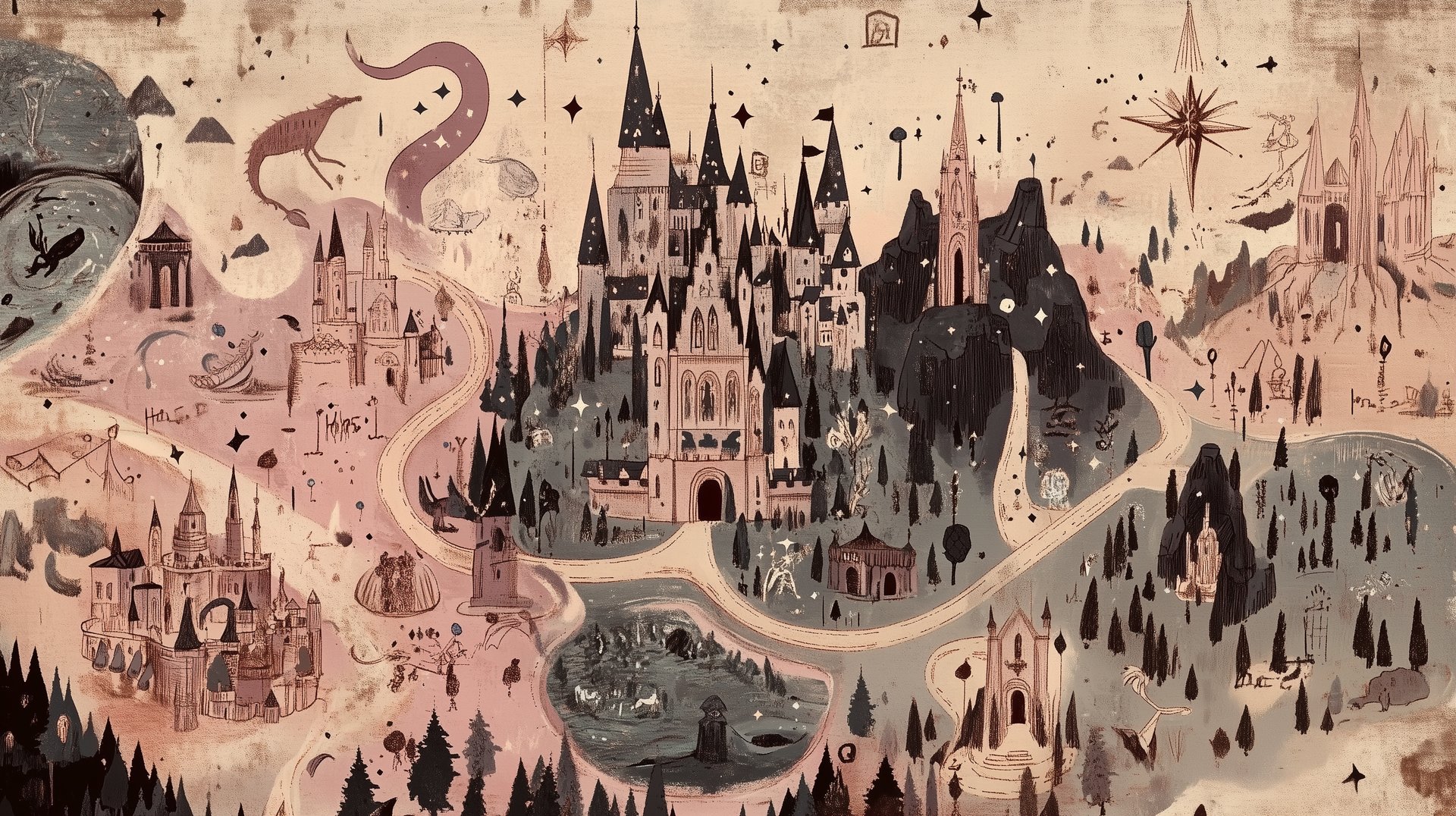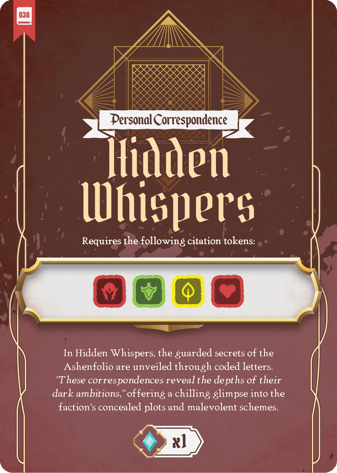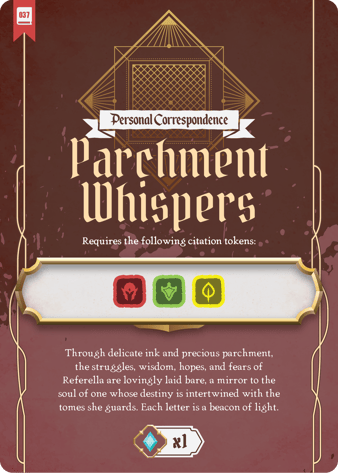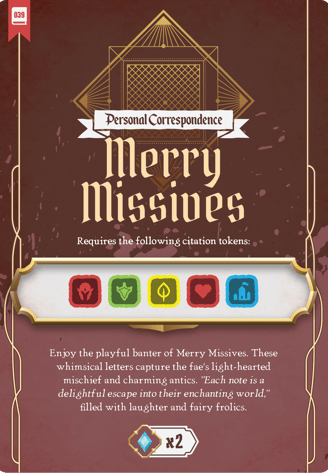
Personal Correspondence
Not all knowledge is bound within books or spoken before councils—some truths are shared in sealed letters, private exchanges, and fleeting words between confidants. Personal correspondence preserves the thoughts, emotions, and hidden dealings of history, offering insights that are raw, intimate, and often lost to time. Whether written in ink on parchment, transcribed onto enchanted scrolls, or sent through ethereal messages, these communications form a delicate yet vital part of the historical record.
Unlike books or official documents, personal correspondence has unique citation elements, including:
The sender, as letters and messages are authored by individuals rather than institutions.
The recipient, marking the intended audience of the correspondence.
The date of communication, as letters capture moments in time.
The form of correspondence, whether a letter, personal note, or enchanted transmission.
The repository or archive, if preserved in a collection rather than privately held.
Below, you will find examples of personal correspondence citations, ensuring that even the most intimate words are preserved within scholarly discourse.
Private Letters & Personal Missives
Some words are meant for only one pair of eyes—but history often reveals them to many more.
Example (Harvard Style): Stormweaver, L. (Year 1734, October 7). Letter to Eldrin Brightforge. Celestial Archives, Collection of Magewright Correspondence.
Magical Messages & Ethereal Communications
Not all correspondence is carried by hand or post—some are spoken into crystals, carried by spectral messengers, or woven into the stars themselves.
Example (APA 7th Edition): Moonweaver, C. (Year 1689, Summer Solstice). Encoded Astral Transmission to the Council of Seers. Eldertome Historical Repository.
Published or Archived Letters
Some private letters are deemed too important to remain hidden and are collected, published, or studied as part of a larger historical discourse.
Example (Chicago Style): Brightwing, L. 1425. “On the Nature of Light and the Veil of Shadows.” In The Collected Letters of the Luminary Scholars, edited by V. Eldrin, pp. 56-72. Starlit Press.
Letters and messages are the echoes of lives once lived, capturing unfiltered emotions, whispered secrets, and the passing thoughts of great minds. By citing personal correspondence, scholars ensure that intimate voices of history remain heard, even across the ages. To read another’s words is to glimpse the past through their own eyes—may your citations honor both the writer and the time in which they wrote.







